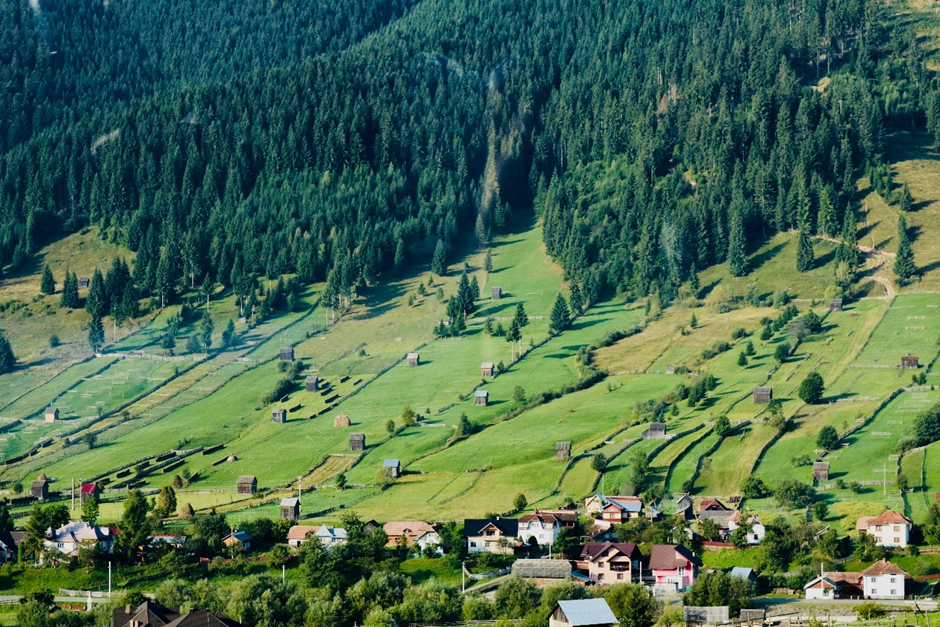Author: Carlos Soto
In a world with multiple challenges, where both environmental and public health have risen to the top of our priorities, the interplay between nature and urban areas becomes increasingly relevant. Cities are the centre for economic activity, the implementation of new technologies, and the race towards sustainability targets alongside a growing number of certifications and international competition. However, in the rush to embrace the future, it is crucial to not overlook the significance of rural areas.
It is well-established that hinterlands are economically, culturally, or geographically connected to urban centres. The surrounding countryside, smaller towns, villages, and even neighbouring regions are influenced by nearby cities for various services and activities. A symbiotic relationship where cities also benefit, vastly, from different resources coming from rural areas, including food, natural resources, land (necessary for infrastructure and industrial development), people (supporting workforce), and even intangible aspects like cultural traditions and some respite from city life.
Nevertheless, every time I work on projects in rural areas, I become more and more conscious of the multiple challenges that these geographies face, along with a lack of investment that sometimes prevents them from pursuing innovative rural futures in connection with urban life. For the interest of this edition of the journal, it would be relevant to mention that one prevailing challenge is the out-migration of young people, as evidenced in a UK-wide study in 2018[1], and another recent one focused on England in 2021[2] which showcased the views of younger groups on some aspects of the quality of infrastructure, services and facilities, and how these impact on their career prospects – a reality that affects local economies/development in the longer term.
Thinking rural doesn’t only mean addressing the challenges of rural settlements as part of our remit. Rural thinking is, as well, recognising and harnessing the value that these landscapes bring to the overall equation of sustainable urbanism. Incorporating this isn’t about turning town squares into farms but finding a balance between modernity and simplicity, sustainability and growth, and individuality and community.

Rural communities manifest some dimensions that we could aspire to see further integrated within cities:
Community bonds, achieving together.
Embracing rural thinking can help us shape cities that aren’t just efficient and innovative, but also deeply connected to the people who call them home. Rurality places a strong emphasis on close-knit communities and social bonds. Think of community centres, neighbourhood associations, shared spaces, and recreational areas. All of these play a fundamental role in encouraging people to get together, collaborate, and make things happen in their communities.
This is usually facilitated by keeping the size and scale of projects manageable – at the neighbourhood level. In rural communities, you often notice local decision-making and participatory governance models in the form of community owned buildings, and local production initiatives that offer good examples that could be better explored in cities via urban living labs[3].
Nature and ecosystem services
Ecosystem services and urban-rural linkages have gained ground in academic studies[4]; improving air quality, mitigating the urban heat island effect, sequestering carbon, and enhancing water management through natural filtration and flood control are just a few of the benefits of bringing more nature into the urban fabric, which also contribute to social and cultural aspects.
The advantages of incorporating nature in cities are profound and multifaceted. Rewilding practices introduce pockets of nature into urban landscapes by creating green infrastructure and restoring natural habitats. These initiatives do not necessarily need to be extensive but should be guided by evidence, considering aspects beyond aesthetics, such as biodiversity (the migration routes of birds, the need for shelters, and plant species for pollinators), weather and natural risk management, local climate zones, and vulnerability. The implementation of nature in buildings, places, and cities, should not be seen as a competition for a credential or a city branding endeavour, it is a matter of serving a purpose that could serve at a very local scale.
We live in unprecedented times with numerous research and funding opportunities to pilot and streamline sustainable practices in urban design and planning. These could sustain proposals within the inner city and in connection with rurality, rather than solely focusing on the outer green belt. Such initiatives foster a stronger sense of connection between people and the environment, promoting physical and mental well-being for residents, and building a sustainable foundation for mitigation and adaptation strategies in response to the tightening constraints of the carbon budget.
Back to Simplicity
Thinking rural means appreciating the simplicity of life. In rural areas, individuals often place a high value on self-sufficiency, local resources, and a sustainable lifestyle (except when it comes to transportation – car dependency is very high in rural areas, but that’s a topic for another discussion). These principles can be applied in urban settings to promote minimalism, reduce overconsumption, and foster a sense of responsibility.
By prioritising what is essential, modern cities can embrace practices beyond urban gardening, aimed at reducing waste, promoting local and sustainable food sources, and leveraging existent networks to lead to a more eco-conscious and sustainable urban life.
More urbanists with rural awareness
The rural landscape harbours a wealth of transformative ideas capable of enhancing our urban environments significantly. It might be time for us to embark on an exploration aimed at uncovering how planners and designers can weave a touch of “rural magic” into the fabric of our concrete jungles considering the above dimensions and challenges.
Ultimately, both rural and urban areas play pivotal roles in the realm of urbanism. Our quest is to discern the ways in which each sphere contributes to the sustainable and balanced evolution of our ever-changing world—a journey that remains essential and with a lot of room for improvement.
[1] https://www.scotland.lantra.co.uk/news/results-survey-rural-young-people-announced






